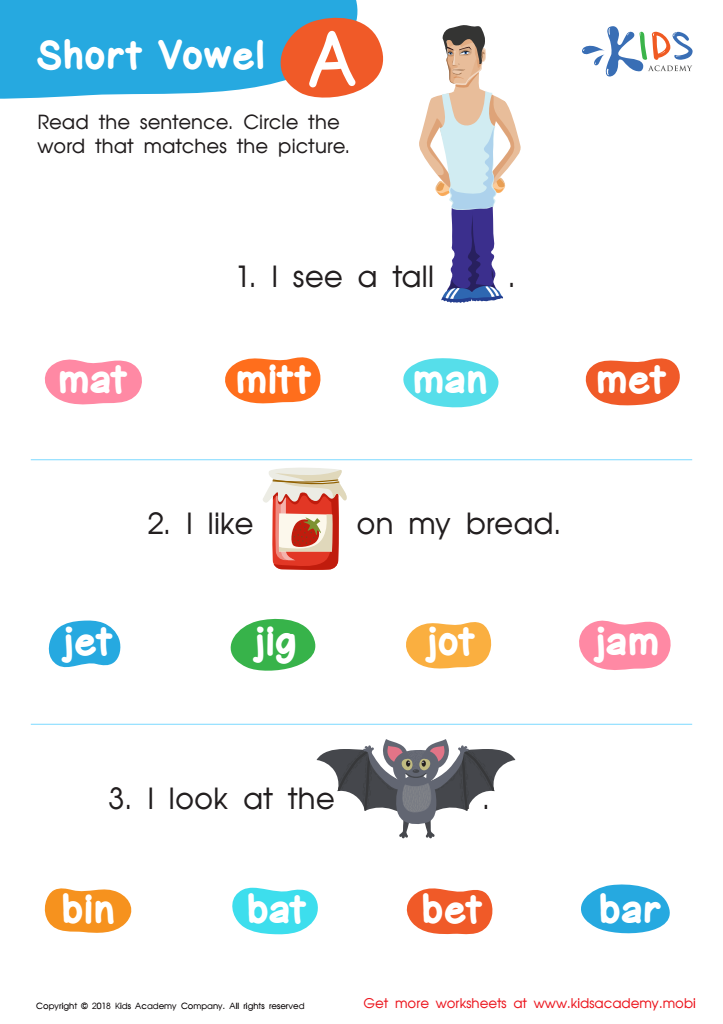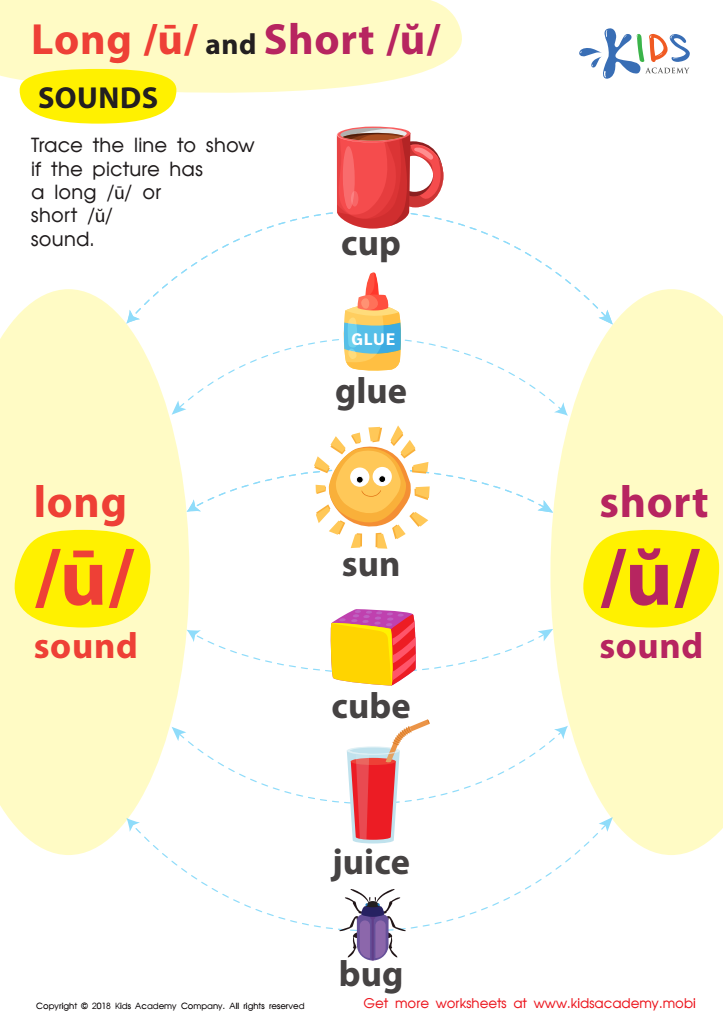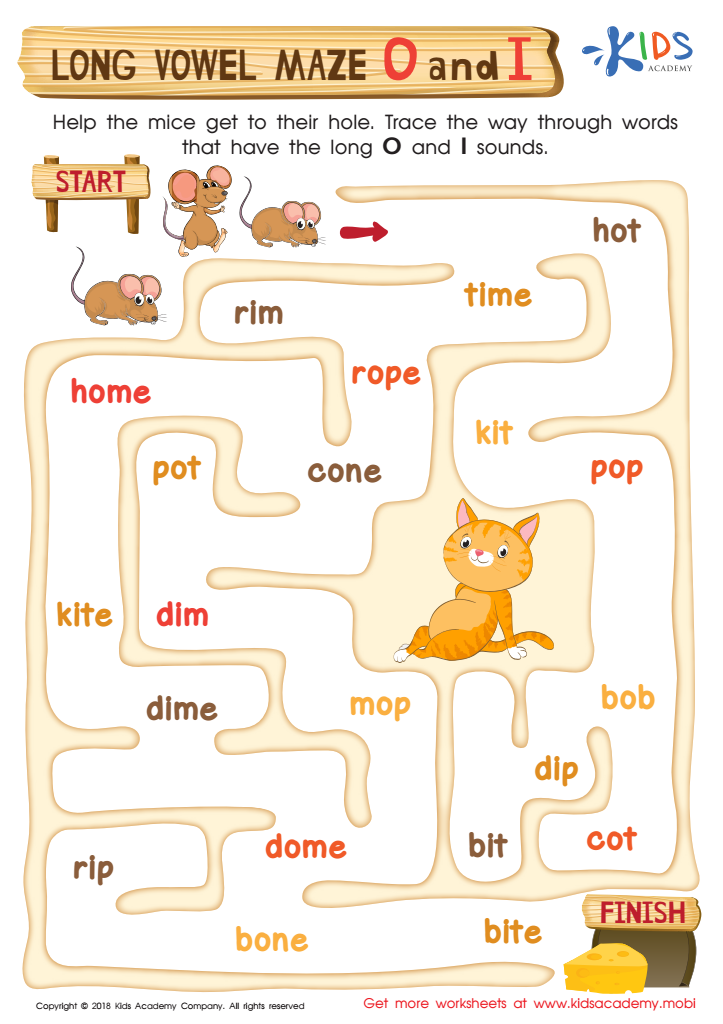Vowel Recognition Normal Letter Recognition Worksheets for Ages 7-9
4 filtered results
-
From - To
Enhance your child's reading skills with our "Vowel Recognition Normal Letter Recognition Worksheets for Ages 7-9". These expertly designed worksheets focus on identifying and distinguishing vowels within words, fostering essential early reading capabilities. Perfect for 7 to 9-year-olds, the activities are tailored to be engaging and educational, helping learners improve their vowel recognition and overall letter identification. These worksheets are ideal for classroom use or additional practice at home, making learning an enjoyable experience. Equip your child with robust literacy skills through our thoughtfully crafted worksheets, setting the foundation for fluent reading and academic success.


Short Vowel /a/ Worksheet


Short Vowels /e/, /i/, and /u/ Worksheet


Reading: Long U and Short U Sounds Worksheet


Long Vowel Maze /o/ and /i/ Worksheet
Vowel recognition and normal letter recognition are crucial literacy skills for children ages 7-9, forming the foundation for reading and writing proficiency. At this developmental stage, kids transition from learning to read to reading to learn. Recognizing vowels is essential because vowels are the building blocks of syllables and integral in forming words. Understanding vowel sounds helps children decode new words, which is vital for reading fluency and comprehension.
Proficiency in normal letter recognition ensures that children can distinguish between different letters, leading to accurate reading and writing. When children can effortlessly recognize letters, they can focus on comprehending the text rather than struggling with basic decoding. This efficiency promotes a smoother learning progression, from phonemic awareness (recognizing sounds) to phonics (mapping these sounds to letters and words).
For parents and teachers, emphasizing these skills can prevent future reading difficulties and related academic challenges. Early competence in these areas boosts confidence and fosters a positive attitude towards learning. By supporting vowel and letter recognition, caregivers lay down a robust literacy foundation, crucial for academic success and overall cognitive development. Hence, prioritizing these skills is essential for nurturing capable, enthusiastic, and lifelong readers.
 Assign to My Students
Assign to My Students















